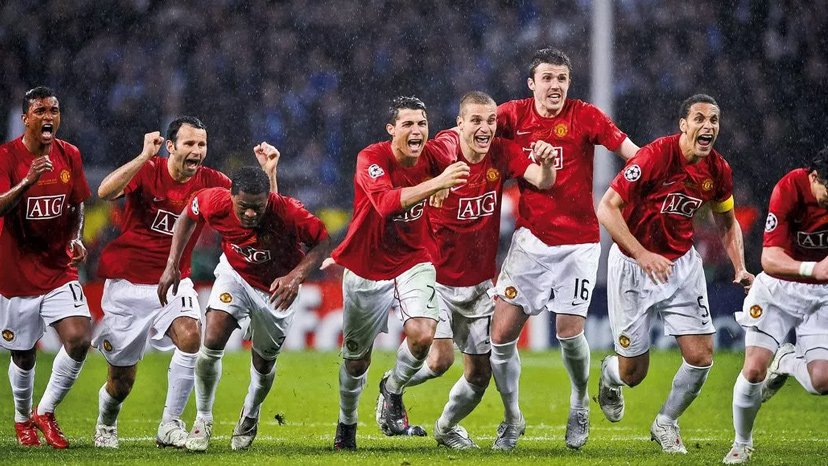When you think of the best Manchester United team ever, usually one (very deserving) team come to mind.
Sir Alex Ferguson’s 1999 side are generally considered one of the best sides in English history. The Scot led his side to the legendary treble, lifting the Premier League, FA Cup and Champions League, all in one season.
With stars like David Beckham, Andy Cole and Roy Keane, the side have gone down in legend as the heroic side that did it all. Nobody could compete with them, surely?
Manchester United 2007-2008
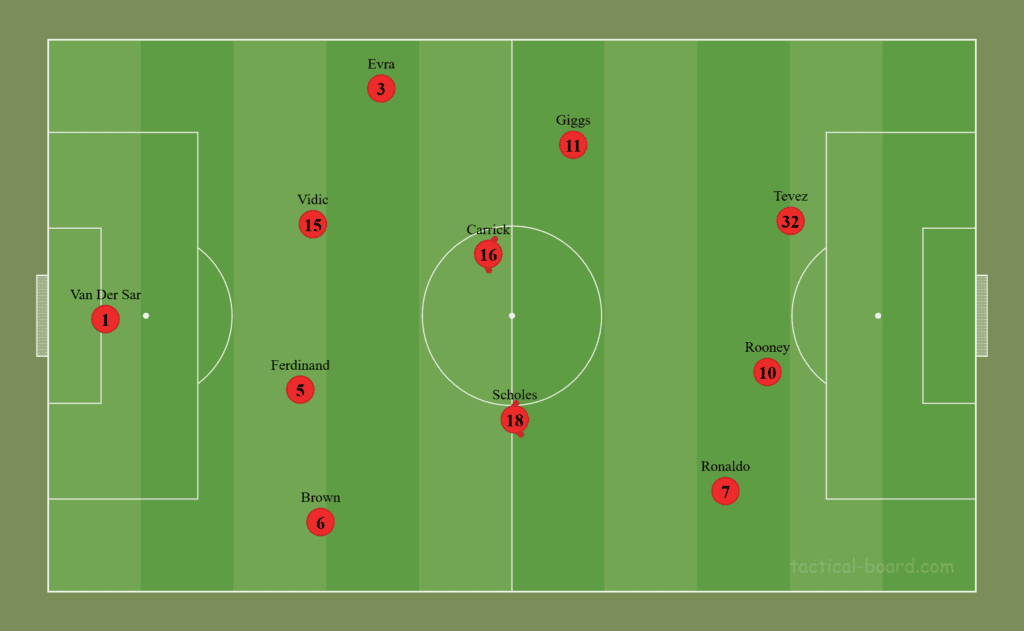
Well, the 2008 Manchester United team didn’t win the treble, but they did manage a Premier League and Champions League double with an incredibly exciting attacking side.
They did lose in the fourth round of the FA Cup, but under controversial circumstances. Despite dominating Portsmouth (who went on to win the final against Cardiff City), a red card by Edwin Van Der Sar meant Rio Ferdinand had to go in goal, and Pompey snatched a 1-0 victory.
Their League Cup campaign also went poorly. United lost 2-0 to Coventry at the first time of asking, although the team featured a host of young players, playing one of their first games for the club.
But they were not the side that made history and won the Champions League. This legendary Manchester United team will go down in history for the incredible talent all over the pitch, spearheaded by one of the greatest attacks ever seen in England.
The Attack

The trio leading the attack for Manchester United in the 2007/2008 season is one of the greatest ever seen in English football.
While the holy trinity of Ballon d’Or winners Best, Charlton and Law have their statues outside of Old Trafford, younger fans have Tevez, Rooney and Ronaldo in their hearts.
With their extreme talents apparent to all who saw them, Ferguson allowed the three men the freedom to attack at will. The team set up as a counter-attacking side, giving them the freedom to run at defence when they caught teams on the break.
While the team generally played with two banks of four in a 442, in actuality it was much different. Cristiano Ronaldo effectively played as an inside forward, cutting inside to look for shooting opportunities or key passed, rather than looking to cross the ball in.
Meanwhile, the front two of Wayne Rooney and Carlos Tevez (backed up by Louis Saha, when fit) did all the running on the pitch, chasing the ball and closing down the space in the defence.
Ronaldo was not one to track back when United lost the ball, so one of Rooney or Tevez carried his water defensively during this time. This allowed Ronaldo to stay forward and work his magic when the ball was won back.
And it worked beautifully. The Portuguese scored 42 goals in all competitions, with 31 of them coming in the league. Four of these were free kicks, with five goals being outside the box, showing the versitility in his goalscoring.
He had come a long way from the skinny teenager needlessly trying tricks on the touchline, and was instead becoming the most deadly striker Europe.
This is not to say the other forwards weren’t banging them in, either. Tevez netted 14 (with six assists), while Rooney scored 12 and assisted 10. The front three combined to score 70% of United’s goals, showing just how effective a unit they were up top.
The Midfield
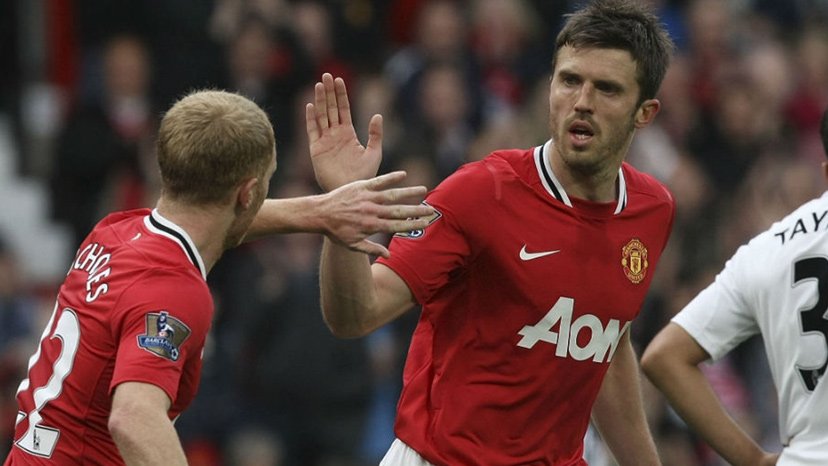
With Ronaldo not really playing on the right of midfielder, and being more of a forward, we’ll look at the three men who sat in the rest of that midfield four.
Ryan Giggs started the bulk of the games on the left. The Welshman was tasked with staying wide, stretching the defence and sending crosses into the box.
The team played much wider than a usual compact four-four-two, owing to their fantastic midfield and defence (who we’ll get onto later).
Alongside Giggs saw the fantastic midfield duo of Paul Scholes and Michael Carrick. Scholes dictated the tempo of the game from deep. His staggering passing range allowed him to launch long balls forward to initiate counter-attacks, or running into space to launch his own attack.
He was partnered with Michael Carrick, a young talent signed from West Ham the year prior. Equally adept with the ball at his feed, his job was to shield the defence while the rest of the team did their blistering counter attack.
Carrick would lay the ball off to Scholes, or even send a few Hollywood passes forward himself. The combination worked perfectly, as it gave Scholes the opportunity to bomb forward himself, with Carrick ordered to hold his position to keep the defensive shape of the side.
The Defence
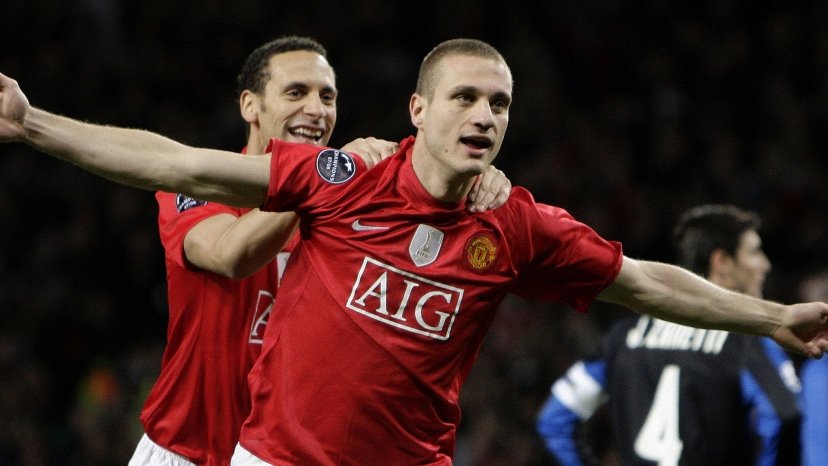
With such an attacking side, the 2008 Manchester United defence needed to be something special.
Luckily, it was!
This was despite injury to long-time right-back Gary Neville, who missed the bulk of the campaign and the majority of matches that season.
He was replaced at right back by either John O’Shea or Wes Brown, both centre halves who were tasked with shutting down the right-hand side and supporting Ronaldo whenever possible.
On the other side was Patrice Evra, the French left back who will go down as one of United’s all-time greats. A force going forward, he was also adept in defence, although it was not his strong point.
Evra was known to bomb forward, overlapping Giggs and launching balls into the box, with Ronaldo usually lurking on the centre spot, ready for the header.
The two full-backs played very wide, stretching the opposition and creating more space for the attackers to play into. While this did leave gaps in their own shape, it was covered by the incredible defensive work by Michael Carrick and the two centre-halves.
These were Rio Ferdinand and Nermanja Vidic, arguable United’s greatest ever defensive duo. The perfect combination, they combined Vidic’s power and fearlessness in a tackle, with the elegant play of Ferdinand, whose speed and passing ability made him the perfect ball-playing defender.
United played a mid-block, slightly higher than you’d expect for a counter attacking side. With the speed of Ferdinand, they could afford to sit higher up, although their pressing was much more subdued compared to the likes of Klopp’s Liverpool.
This back four cemented itself as one of the best of all time. They conceded only 22 times in the league (the joint 6th lowest ever) and managed 21 clean sheets. They were a rock at the back, and allowed the strikers to work their magic without worry.
The Goalkeeper
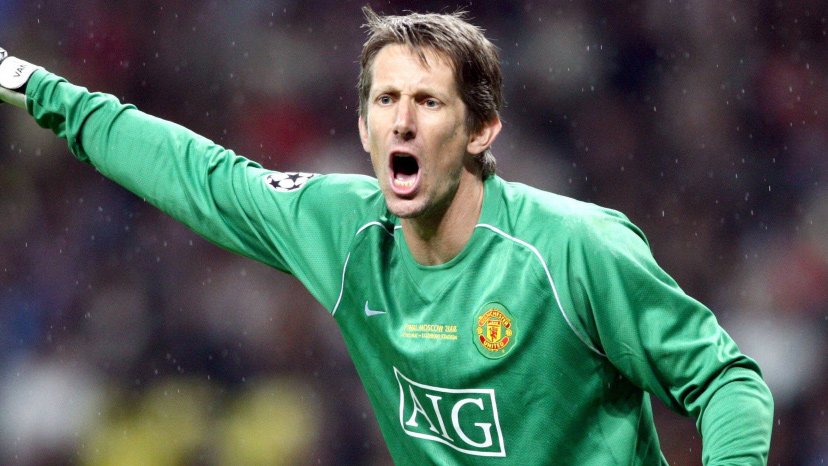
The back four would not have been as good as it was without the calming presence of the giant Dutchman, Edwin Van Der Sar.
The former Juventus man joined the year prior, already in his mid-30s and playing at Fulham. However, he turned out to be just what United needed, after nearly a decade of trying to replace Peter Schmeical.
Van Der Sar was a calming presence in defence. His large frame and consistent, impeccable performances gave the entire team room to breathe. He commanded his box well, and never shirked in claiming a cross.
Mistakes were few and far between, and he shepherded his defence as good as anyone ever did for the Red Devils.
He was between the sticks as Manchester United secured 21 clean sheets, although due to injury only managed 29 league matches (with Tomasz Kuszczak deputising).
Alterations
The team played slightly different depending on opponents, but the core of the tactics remained the same.
Sir Alex Ferguson set his side up as a counter-attacking side, always ready to race down the pitch at break-neck speed to fashion a chance for themselves.
During particularly tough matches, Ronaldo would be pushed up front, making way for a different player on the right-hand side.
This role was usually afforded to Park Ji-Sung or Owen Hargreaves. This gave United a move secure midfield four, with fewer gaps on the right-hand side for opposition wingers to exploit.
However, this meant that one of Rooney or Tevez would be dropped to make way. In some games (such as against Roma in the Champions League), Ferguson employed Rooney on the left-hand side, Park on the right and a midfield three of Scholes, Carrick and Anderson. This allowed for greater control of midfield, and gave Ronaldo a licence to roam up front, alone.
Conclusion
The Manchester United side of 2008 employed a 442/433 hybrid, although occasionally slipping into a 451 when required.
The team was built on a rock-solid defence, which allowed the likes of Rooney and Ronaldo to work their magic up front, aided by Paul Scholes in midfield.
In Europe, the tactics changed slightly, and Ferguson showed his tactical nous by leading Manchester United to their third Champions League title, defeating Chelsea in the final on penalties.
